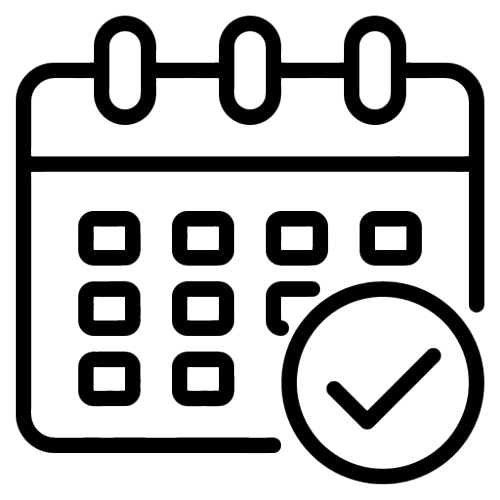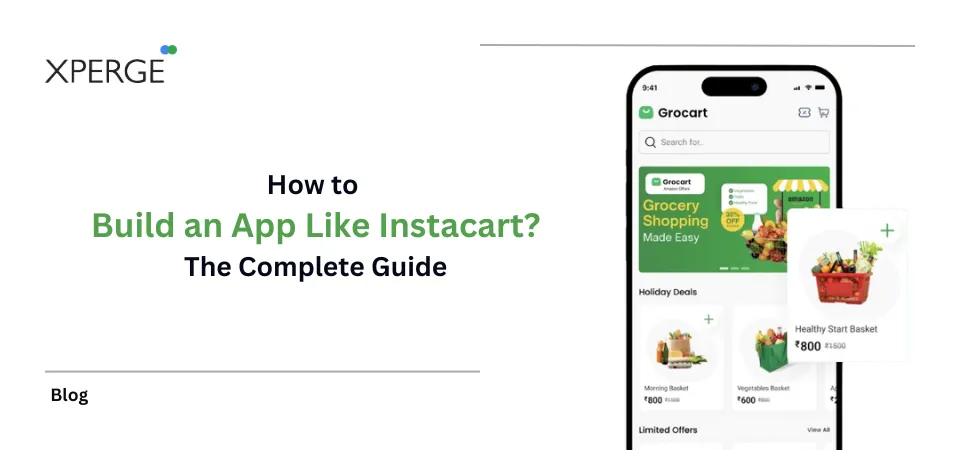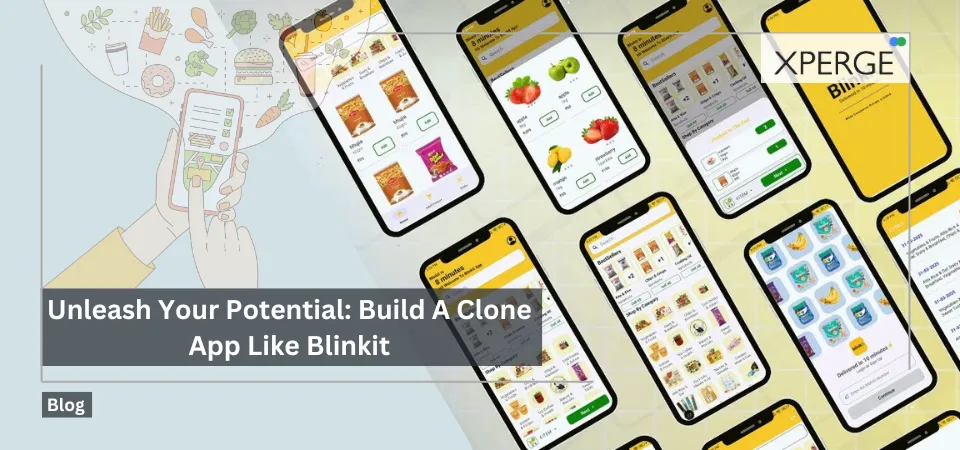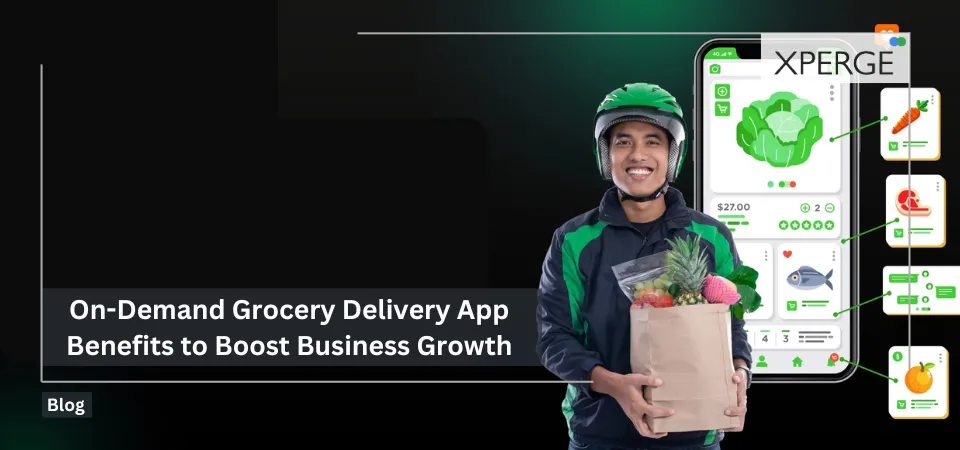Food delivery apps have revolutionized the way people order and enjoy their meals. The growing demand for convenience has fueled the rise of food delivery startups, making it one of the most profitable industries today. If you’re looking to develop a food delivery app, this guide will walk you through the step-by-step process of building a successful and scalable food delivery business.
Top 5 Key Takeaways
- Research First – Understand market trends, competitors, and customer needs before development.
- Pick the Right Model – Choose between restaurant-to-consumer or aggregator models based on your goals.
- Features Drive Engagement – Real-time tracking, payments, and push notifications enhance user experience.
- Monetization is Key – Earn through delivery fees, commissions, ads, and restaurant partnerships.
- UI/UX & Marketing Matter – A smooth interface and strong digital marketing ensure success.
Step 1: Conduct Comprehensive Market Research
Before diving into app development, it’s crucial to analyze the market trends, target audience, and competitors. Market research will help you understand:
- Who your competitors are (e.g., Uber Eats, DoorDash, Zomato)
- What gaps exist in the current food delivery industry
- Which audience you want to target (students, working professionals, families, etc.)
- What pricing model works best based on your location
Gather insights through surveys, online reviews, and competitor analysis to ensure your app meets user expectations.
Step 2: Pick a Business Model
Choosing the right business model is essential for long-term success. There are two primary food delivery business models:
(a) Restaurant-to-Consumer Delivery
In this model, restaurants manage the entire delivery process, and the app serves as a platform for customers to place orders. Popular examples include Domino’s Pizza and McDonald’s app.
Pros:
- Faster deliveries
- Direct customer relationships
- Lower commission fees for restaurants
Cons:
- Limited restaurant choices
- Higher operational costs for restaurants
(b) Aggregator Model
The aggregator model connects multiple restaurants with customers through a centralized platform. The platform handles orders and deliveries, charging a commission from restaurants. Examples include UberEats, DoorDash, and Zomato.
Pros:
- More restaurant options for customers
- Streamlined operations with third-party delivery fleets
- Increased revenue opportunities
Cons:
- Requires a strong logistics network
- Higher initial investment
Step 3: Consider the App Development Cost
The cost of developing a food delivery app depends on multiple factors, including:
- App complexity (basic, mid-level, advanced)
- Development team (freelancers, in-house, agency)
- Platform choice (iOS, Android, Web)
- Third-party integrations (payment gateways, Google Maps, analytics)
A basic food delivery app can cost anywhere between $30,000 – $50,000, while a feature-rich app with AI-powered recommendations and real-time tracking can exceed $100,000.

Step 4: Choose the Essential App Features
Your food delivery app will have four main components:
(a) User App Features
- Easy User Registration – Sign up via email, phone, or social media.
- User Profile – Manage personal details, payment info, and preferences.
- Geolocation – Enables restaurant and delivery tracking.
- Restaurant/Dish Search – Filter options based on cuisine, price, and ratings.
- Placing an Order – Add items to the cart and place an order seamlessly.
- Quick Payment – Integrate multiple payment gateways (credit card, UPI, wallets).
- Real-Time Tracking – Track food delivery in real time.
- Customizing Orders – Allow users to add special requests or modifications.
- In-App Messaging – Chat with customer support or the delivery person.
- Rating and Reviews – Provide feedback on food and service.
- Push Notifications – Notify users about order updates, discounts, and promotions.
(b) Restaurant App Features
- Dashboard – Manage orders, revenue, and customer data.
- Registration – Restaurants sign up and list their menu.
- Content Management – Upload images, update menus, and adjust pricing.
- Order Management – View and accept incoming orders.
- Receiving Payments – Secure transaction processing.
- Customer Support – Resolve customer queries efficiently.
(c) Delivery App Features
- Registration – Drivers sign up and create a profile.
- Profile Management – Update personal details and availability.
- Order Management – Accept and deliver orders efficiently.
- GPS Support – Navigate through optimized routes.
- Contact Restaurant/Customer – Communicate for order updates.
(d) Admin Panel Features
- Admin Dashboard – Monitor real-time app performance.
- Order Management – Track all orders and deliveries.
- User Management – Handle customer accounts and complaints.
- Restaurant Management – Approve and manage restaurant listings.
- Analytics and Reports – Generate business insights.
- Delivery Fleet Management – Assign delivery tasks efficiently.
Step 5: Pick the Revenue Models
Your revenue model determines how your food delivery app will generate profit. Here are some monetization strategies:
(a) Delivery Fees for Every Order
Charge users a fixed or distance-based delivery fee for every order.
(b) Commission from Restaurants for Each Order
Take a commission (10-30%) from restaurant partners for every order processed through the app.
(c) Cost for Advertising
Allow restaurants to pay for premium listings and in-app promotions.
(d) Partnering with Restaurants
Collaborate with restaurants for exclusive deals, subscriptions, or loyalty programs.
Step 6: Choose the Right App Development Company
When selecting an app development company, consider:
- Experience in food delivery app development
- Expertise in UI/UX design
- Proven track record with case studies
- Post-launch support & maintenance
Step 7: Design an Intuitive UI/UX
A user-friendly interface ensures seamless navigation. Focus on:
- Simple and clean design
- Fast-loading screens
- Minimalistic checkout process
- Attractive food images
Step 8: Integrate Third-Party Services
Enhance the app functionality with third-party integrations like:
- Google Maps API for real-time tracking
- Payment gateways (PayPal, Stripe, Apple Pay)
- AI-based recommendations for personalized orders
Step 9: Test the Beta Version
Conduct thorough testing, including:
- Functionality testing (ensuring all features work correctly)
- Performance testing (app speed and responsiveness)
- Security testing (data encryption and protection)
- User feedback (gather insights for improvement)
Step 10: Launch the App and Start Marketing
Once the app is ready, launch it on App Store and Google Play Store. Promote the app through:
- Social media marketing
- Influencer collaborations
- Referral programs
- Google Ads & SEO
Turn Your Food Delivery App Startup Idea Into Reality with Xperge
Building a successful food delivery app requires the right strategy, features, and marketing efforts. By following this step-by-step guide and leveraging professional Software Development practices, you can create a profitable and user-friendly food delivery platform. If you need expert assistance in developing your food delivery app, Xperge provides end-to-end solutions, from UI/UX design to custom app development and marketing strategies. Get in touch with Xperge today to bring your food delivery startup to life!








